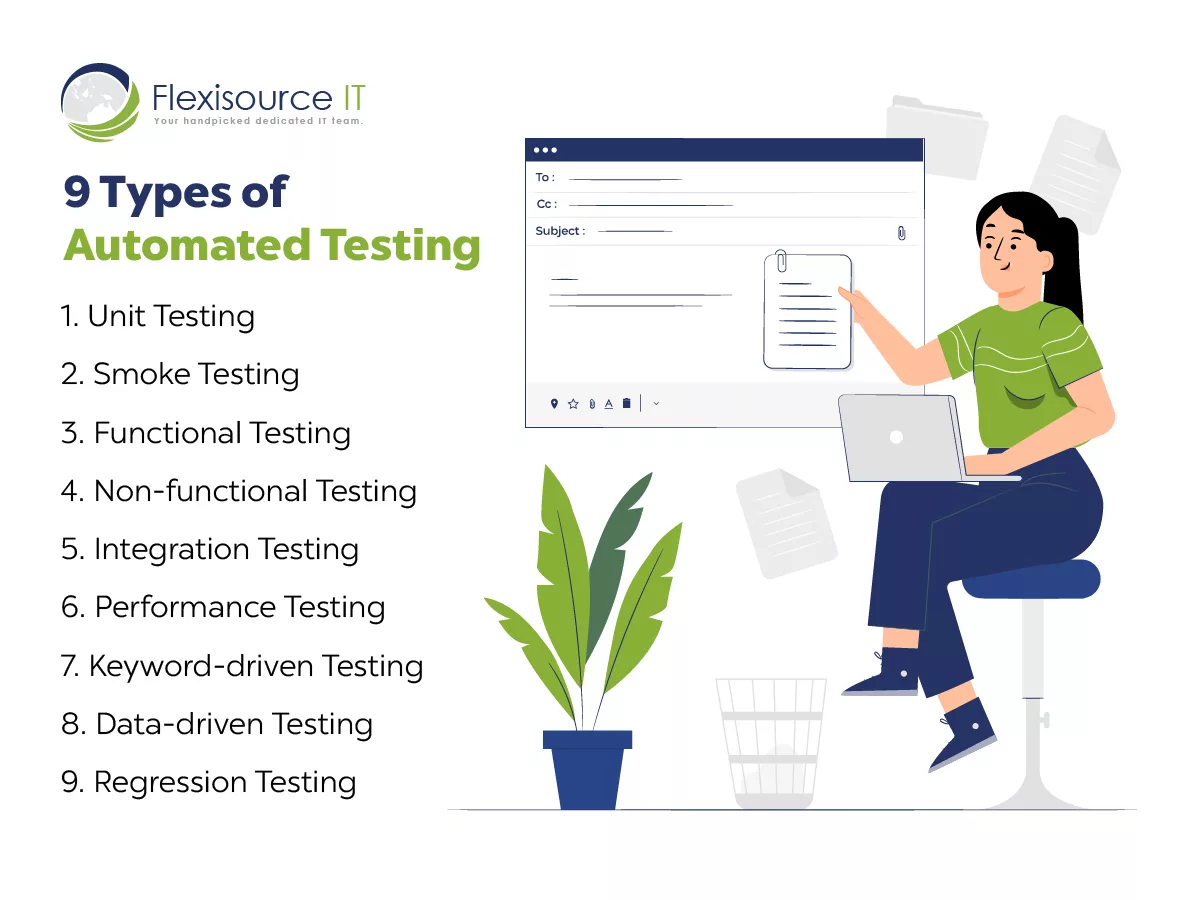With the rise of technology comes to rising need to develop quality-driven software. However, due to demand, developers cannot catch up with the quality. Often, developer forgets to ensure the quality of their software, which is one of the requirements to compete in the market. Moreover, manual testing can no longer serve its purpose due to speed.
And this is where automation testing can help. In this article, we will discourse on automation testing and its type. So whether you are dwelling on getting a career in QA or just simply curious about test automation, this article can help you!
Table of Contents
What Is Automation Testing?
Automation Testing is a software testing technique conducted by quality assurance with the help of a computer program or Test automation tools. It is a process of executing a set of predefined tests to validate the functionality of a software product.
This testing is conducted with a set of predefined tests to validate the functionality of a software product. It helps in finding bugs and glitches in the application at an early stage, thus saving time and money.
Likewise, the process includes running test scripts written by developers or testers on an application and using automation tools to execute these scripts against the application under test.
9 Must Use Type of Test Automation
Generally, there are only two main types of automation testing, functional and non-function. But due to the increasing need to automate and the different requirements of businesses, more specific types of automation testing were born. These types of testing provide a more effective way to ensure quality and accuracy by using a program that mimics the actions of a human.
Likewise, here are some of the nine well-known types of automation testing. They are:

1. Functional Testing
Functional testing is a type of automation testing that verifies an application’s behavior by examining how it interacts with its environment. A business analyst or quality assurance specialist often creates it to validate that a system performs as required and will behave expectedly.
2. Non-functional Testing
Non-functional testing is a type of automation testing that analyses the non-functional aspects of software such as a database, APIs, Server, communication, etc. This type of automation testing is also known as performance, load, and volume testing.
QA Tester usually uses non-functional tests after the functional tests are completed. They are used to verify that the non-functional requirement of an application is working correctly, such as performance, usability, etc.
3. Unit Testing
Unit Testing is a type of automation testing used to check the quality of the code. It tests whether an application’s particular unit or module works as expected. This automation testing is often done using test cases written in advance and executed by a computer program.
Unit Automation Testing checks for two things:
- If the software behaves as expected (correct logic, no error messages)
- Or if the software acts as desired with different input values (different data sets).
4. Smoke Testing
Smoke Testing is a type of automation testing focused on testing a program to see the strength and capability of the deployed build of the software.
The primary purpose of smoke testing is to identify any errors in the system and see if some features of the program are functional or not. Furthermore, QA Testers use smoke testing to decide whether an application should be shelved due to a lack of functionality and features. It also helps the tester determine if they should send the software back to continue the development and other phases of testing.
QA analysts usually conduct smoke testing once the developers integrate all of the software’s features and functions. Suppose the QA tester faces failure on this testing. In that case, they generally send the application back to developers for further modifications.
5. Integration Testing
Integration testing is when a system is tested from end-to-end to see if all of its components work together. It’s often the last stage before deploying a system into production as it ensures everything works as expected.
The main goal of integration testing is to ensure that all functions interact seamlessly with other parts to facilitate the smooth functioning of the software.
6. Performance Testing
Performance testing is the process of measuring a system’s performance under a particular workload. This type of automation testing is necessary to ensure that your application can handle the load in production.
Moreover, it is one of the essential parts of any QA strategy because it ensures that your application can meet user expectations in production. This testing can help identify any possible issues or performance hurdles that developers could face. Through this, developers can remove the problematic case and optimize the software to deliver better end-user results.
Likewise, performance tests are performed by executing a test script with different input parameters and measuring the response time, throughput, and resource utilization.
7. Keyword-driven Testing
Keyword-driven testing is a type of test automation that uses keywords in the test data to control the execution of the test. The keywords are typically used as input parameters for a function or object. Each keyword represents an action to be carried out by the program.
For example, keyword-driven test for calculating the distance between two points on a map. The keywords are “lat1” and “lon1” for the latitude and longitude coordinates of Point A and “lat2” and “lon2” for Point B.
This type of automation testing
8. Data-driven Testing
Data-driven testing is a type of automation testing that involves loading or using external data to automate a test case. The data are usually stored in a separate spreadsheet table to feed into the automation test tool.
Many QA testers use this type of automation testing to help them save time and work efficiently. Using data-driven testing, QA testers can conduct multiple sets of tests using the same test scripts for a different combination of input test data.
9. Regression Testing
Regression testing is a type of software testing used by QA experts, mainly for maintenance testing. The main goal of this automation testing is to ensure that no part of the software regressed during the development.
QA experts can do regression testing manually or automated, but it’s usually automated because it’s faster and more accurate. It is accomplished by re-running the software’s functional and non-functional features and seeing if they act as before after some code changes. Moreover, this type of software testing is done after every development iteration.
Hire Your Test Automation Quality Assurance Specialist with Us!
Automation Testing can indeed change the way you develop software. However, learning the applicability of teaching test automation will help you plan and make your testing more efficient and effective.
And if you want to hire a test automation expert, contact Flexisource IT! We have one of the best test automation services in Australia.
Pamela is a full-time content writer and a lifelong Philomath. Her previous experience as a research analyst made her passionate about traveling the world and understanding how it works. During her day off, you can often find her indoors, writing stories or oil painting.


